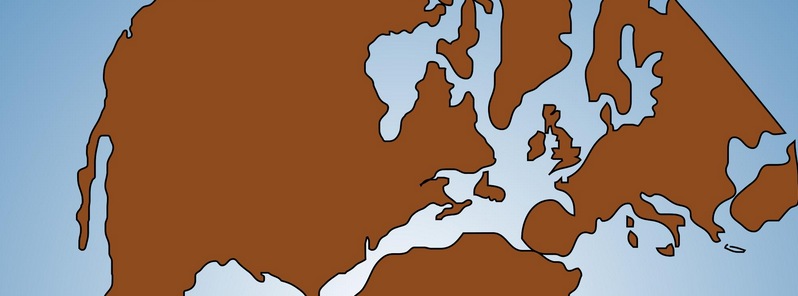Tectonic model shows North America may once have been linked to Australia or Antarctica

According to the new USGS research published recently in Lithosphere, North America may have once been attached to Australia.
Approximately every 300 million years, the Earth completes a supercontinent cycle wherein continents drift toward one another and collide, remain attached for millions of years, and eventually rift back apart. Geologic processes such as subduction and rifting aid in the formation and eventual break-up of supercontinents, and these same processes also help form valuable mineral resource deposits. Determining the geometry and history of ancient supercontinents is an important part of reconstructing the geologic evolution of Earth, and it can also lead to a better understanding of past and present mineral distributions.
North America is a key component in reconstructions of many former supercontinents, and there are strong geological associations between the western United States and Australia, which is one of the world’s leading mineral producers.
In this study, lead author James Jones and others synthesized mineral age data from ancient sedimentary rocks in the Trampas and Yankee Joe basins of Arizona and New Mexico. They found that the ages of many zircon crystals – mineral grains that were eroded from other rocks and embedded in the sedimentary deposits – were approximately 1.6 to 1.5 billion years old, an age range that does not match any known geologic age provinces in the entire western United States.
This surprising result actually mirrors previous studies of the Belt-Purcell basin (located in Montana, Idaho and parts of British Columbia, Canada) and a recently recognized basin in western Yukon, Canada, in which many zircon ages between 1.6 and 1.5 billion years old are common despite the absence of matching potential source rocks of this age.
However, the distinctive zircon ages in all three study locations do match the well known ages of districts in Australia and, to a slightly lesser known extent, Antarctica.
This publication marks the first time a complete detrital mineral age dataset has been compiled to compare the Belt basin deposits to strata of similar age in the southwestern United States. “Though the basins eventually evolved along very different trajectories, they have a shared history when they were first formed,” said Jones. “That history gives us clues as to what continents bordered western North America 1.5 billion years ago.”
The tectonic model presented in this paper suggests that the North American sedimentary basins were linked to sediment sources in Australia and Antarctica until the break up of the supercontinent Columbia. The dispersed components of Columbia ultimately reformed into Rodinia, perhaps the first truly global supercontinent in Earth’s history, around 1.0 billion years ago. Continued sampling and analysis of ancient sedimentary basin remnants will remain a critical tool for further testing global supercontinent reconstructions.
Source: USGS
Reference:
- Tectonic and sedimentary linkages between the Belt-Purcell basin and southwestern Laurentia during the Mesoproterozoic, ca. 1.60−1.40 Ga" – James V. Jones, Christopher G. Daniel and Michael F. Doe – Geological Society of America – Lithosphere – doi: 10.1130/L438.1
Featured image: Simplified sketch of the western part of Pangaea by Gunnar Ries (CC)

Commenting rules and guidelines
We value the thoughts and opinions of our readers and welcome healthy discussions on our website. In order to maintain a respectful and positive community, we ask that all commenters follow these rules:
We reserve the right to remove any comments that violate these rules. By commenting on our website, you agree to abide by these guidelines. Thank you for helping to create a positive and welcoming environment for all.